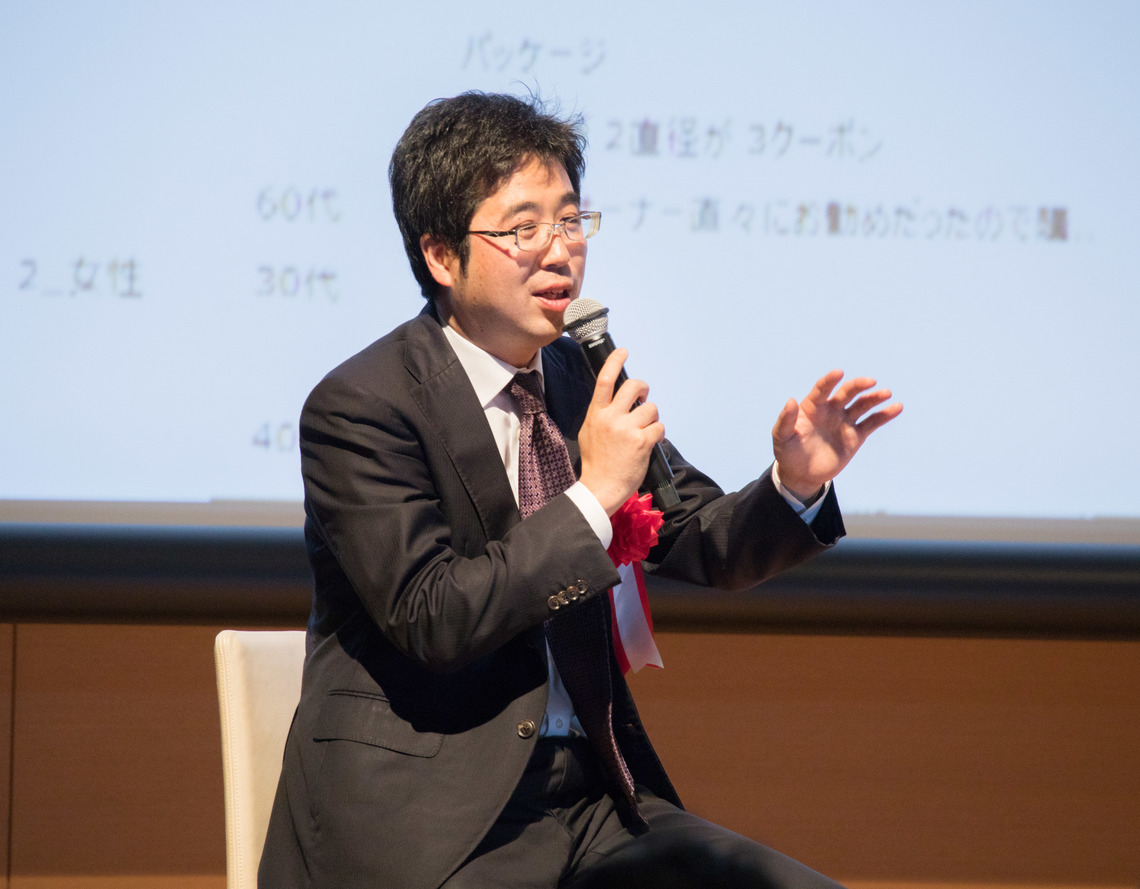"Commerce Marketing Conference―Customer Experience (CX) Transforms Brand Value" was held. Vol.1
On July 29, the "Commerce Marketing Conference—Customer Experience (CX) Transforming Brand Value" was held at Dentsu Inc. Hall. (*) The conference introduced the future of commerce, where online and offline converge, based on domestic and international case studies. This series will cover the key points of this six-part conference.
※On the day, Dentsu Group's three companies—Dentsu Inc., D2C Inc., and Cyber Communications—announced Japan's first estimate of "advertising expenditure on product-selling e-commerce platforms." It reached ¥112.3 billion in 2018 (up 120.6% year-on-year) and is projected to grow further to ¥144.1 billion in 2019 (up 128.3% year-on-year).
Part 1: "Strategies for Retail Digitalization"
【Speaker】
Mr. Toshiro Kobayashi
Lawson, Inc.
Senior Manager, Data Strategy Department, Marketing Strategy Division
Mr. Toshihiko Aizawa
TSUNAGU Partners Co., Ltd.
Mr. Kim Kyun
(Former President and CEO of am/pm Japan)
Dentsu Digital Inc. Visiting Executive Consultant

Part 1 featured Toshihiko Aizawa, former President and Representative Director of am/pm Japan and currently at TSUNAGU Partners, and Toshiro Kobayashi, Senior Manager of the Data Strategy Department, Marketing Strategy Division at Lawson. Aizawa, who was known as the "Analytics President" during his am/pm days for his extensive data utilization, discussed data-driven digitalization strategies for the retail industry with Kobayashi, who has long been involved in leveraging customer data at Lawson.

First, Mr. Aizawa explained the situation in China, where retail tech is rapidly evolving. "While Alibaba is strongly associated with online malls in China, it has now become the country's largest automobile dealer by sales volume. This demonstrates just how deeply online and offline channels are integrated in China."
Why can Alibaba sell high-priced automobiles? Mr. Aizawa explained the reason: "The Alibaba Group operates not only online malls but also physical stores, acquiring customer data at both touchpoints. Promotions that understand individual customers based on the microdata obtained there are proving successful."
According to Aizawa, microdata-driven promotions are also emerging outside China and among manufacturers. For example, P&G's Pantene brand utilizes weather data and user hair type data. When humidity is high, causing hair to frizz for certain users, Pantene recommends products specifically suited for those weather conditions on such days. By leveraging localized weather data and delivering different marketing messages based on customer profiles, they achieved a 24% increase in sales.
Given this situation, Aizawa stated, "Traditional mass marketing is coming to an end. We now have access to unprecedented levels of data, and the current reality is that this data can be leveraged for marketing, strategy, operations, and product development."

Meanwhile, Mr. Kobayashi from Lawson introduced the company's own data utilization efforts. He explained that Lawson's history of data utilization is closely tied to its systemization history: "We started collecting POS data in 1988, and introduced cards capable of identifying individuals starting in 2002. Furthermore, from last year to this year, we've been gradually introducing registers with automatic change dispensers. With these, the customer segment keys on the register have disappeared. If a customer presents their Ponta card, staff can understand the customer without pressing a data customer segment key." Currently, Lawson states that the attributes of about 50% of customers' purchases can be understood from Ponta card data, without needing to press a customer segment key at the register.
Moreover, the customer segment keys only register basic categories like gender and age. Lawson has taken this a step further, analyzing customers by life stage and even values. Specifically, since 2017, they've introduced nine segments based on customer values. These segments are: Impulse Buyers, Anti-Metabo Workers, Hearty Eaters, Reward-Seeking Women, Time-Saving Efficient Moms, Home-Cooking Moms, Thrifty Parents, Conservative Steady Seniors, and Premium Pre-Seniors.
Product development based on these nine segments is also progressing. For example, when asked about favorite menu items by segment, "fried chicken bento" was a common response across multiple segments. However, the preferred fried chicken bento varied by segment. Therefore, they further asked what kind of fried chicken bento would be ideal. From the Hearty Eaters segment, keywords like "large portions" and "plenty of ingredients" emerged. Conversely, the Anti-Metabo Workers, who are similar in age and gender, emphasized keywords like "domestic ingredients" and "plenty of vegetables." Previously, fried chicken bento boxes targeting men in their 30s and 40s tended to emphasize sheer volume. However, applying the value-based segmentation led to the development of a new fried chicken bento box that resonated strongly with the Anti-Metabo Workers, resulting in a major hit.
Given the high number of manufacturer representatives at this conference, Mr. Kobayashi also shared his thoughts on co-creation with manufacturers. Specifically, he proposed that Lawson's proprietary data could be leveraged collaboratively with manufacturers.
Lawson possesses a platform containing approximately 20 billion sales data points and already shares this data with about 70 manufacturers. During the panel discussion, Kobayashi also conducted a live demonstration utilizing this data platform.

The purchasing data within this platform includes four elements: period, store, customer, and product. Furthermore, it enables data analysis across the nine aforementioned segments. The demo mapped the buyer profiles of various beer companies using value-based segments. By combining vast purchasing data with value-based segments, it reveals which segment users support each major beer manufacturer's brands, clearly showing their market positioning.
Starting this year, the platform also implemented a function to conduct surveys among members. This is a joint initiative with Loyalty Marketing, enabling surveys to be sent to customers who purchased specific products. Typically, new products launch at convenience stores on Tuesdays, and survey results become available by the following Saturday.
Mr. Kobayashi stated, "We aim to conduct 100 to 200 such surveys annually," adding, "When we can discuss based on the same data as manufacturers, decision-making speeds up, and we gain more time for strategic thinking." He expressed his intention, "We hope manufacturers will also utilize this going forward."
Next time, we will cover Part 2, titled "New Perspectives on EC Utilization."
Was this article helpful?